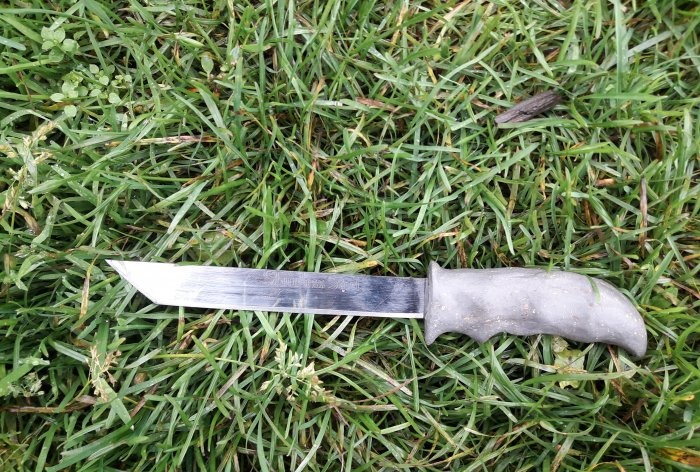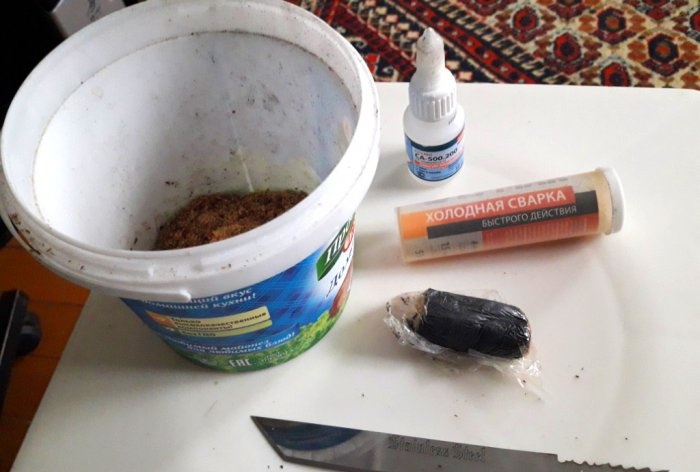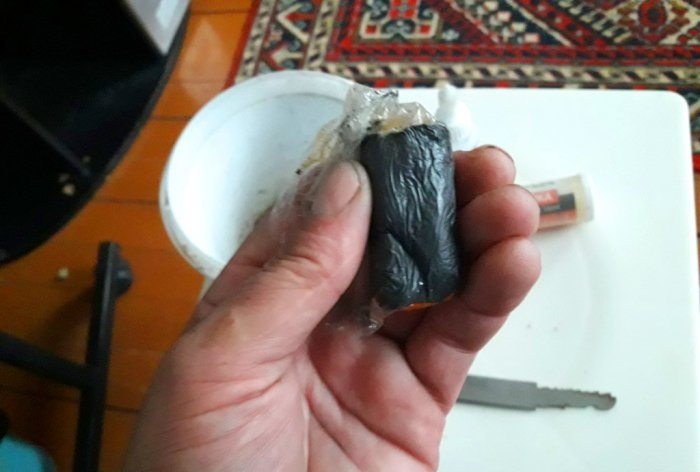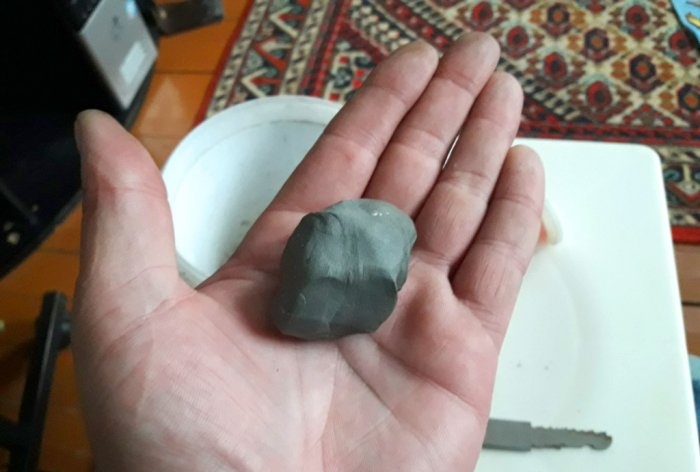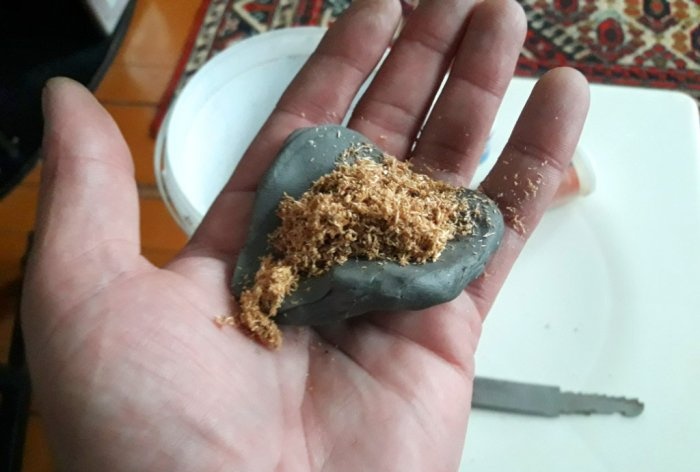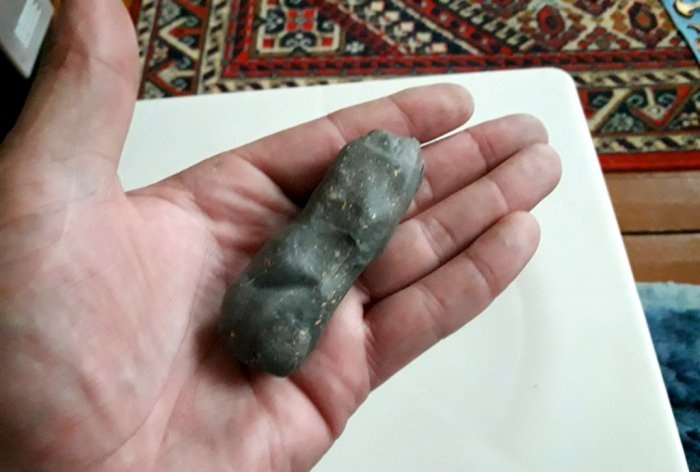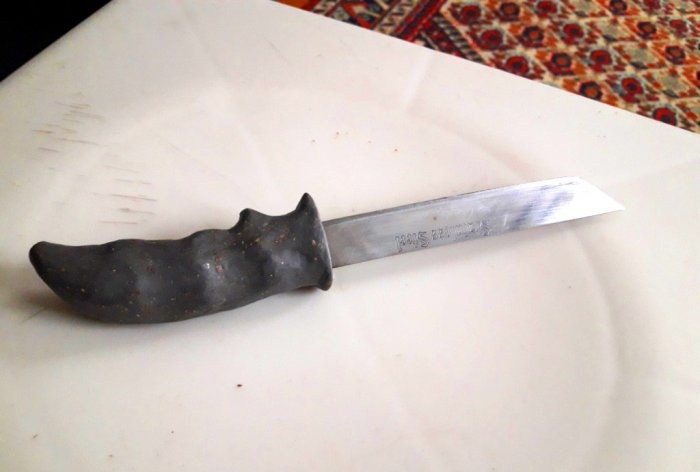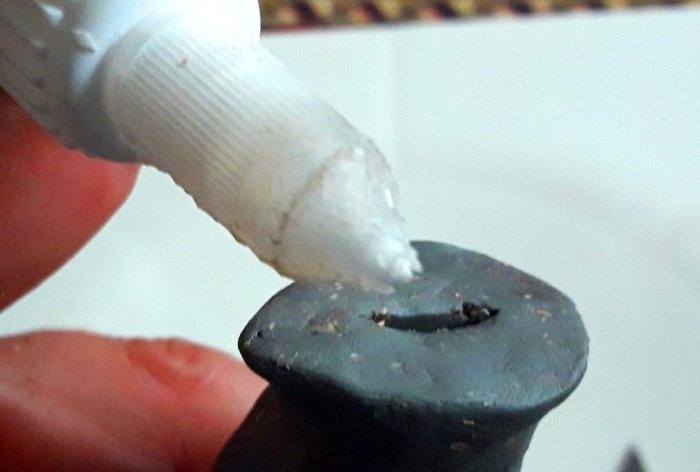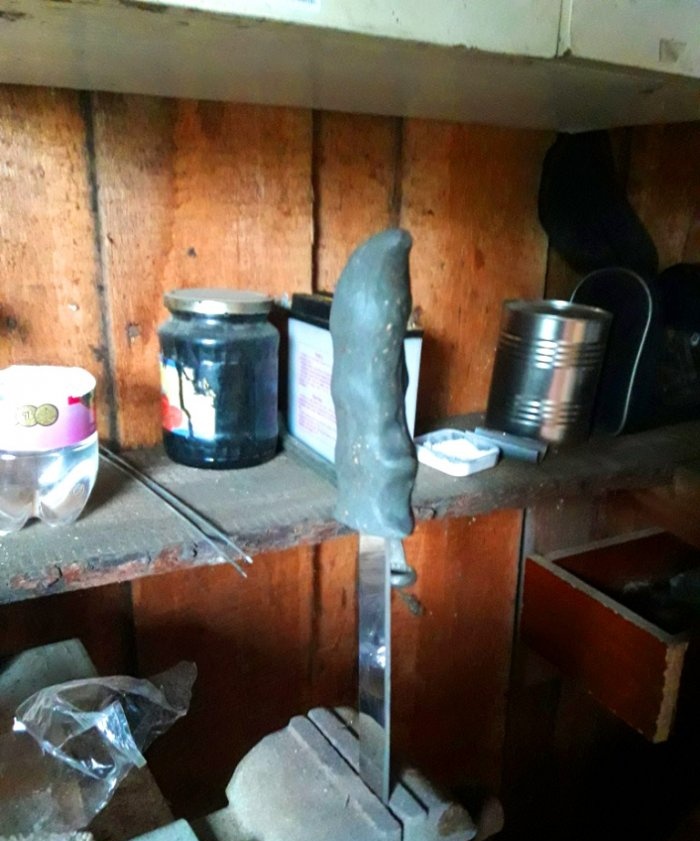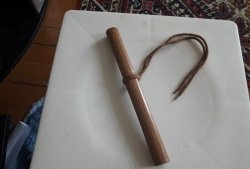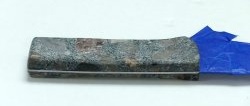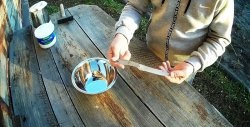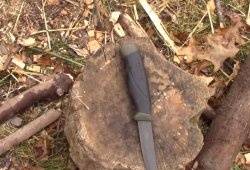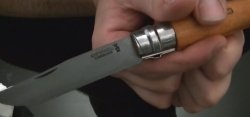A broken knife handle, or a dull blade, of course, is not the end of the world, but still, the event is quite unpleasant, and in order to avoid this unpleasant moment in the future at the most inopportune moment (for example, while mushroom picking or fishing), you need Constantly monitor the condition of the knife. Correct the blade, wipe it so that it does not dull or rust. Also, don’t forget about the handle. If it wobbles on the blade, or is cracked, then it is better not to wait for it to completely fall off, but to replace it in advance. The work ahead will not be dusty (in the sense that there is no need to turn anything on the machine) and will not take long. All we need in terms of “tools” is our own hands!
Will need
- Composite glue (cold welding type).
- Wood chips (preferably very small).
- Secondary glue.
- Water.
It was not by chance that I chose this particular material, because at the beginning of mixing it is very plastic, which allows it to be adjusted to any hand (palm) individually.
Making a knife handle
First, let's prepare the composite cold welding.
This glue is produced in plastic cylindrical tubes, in pieces 9 centimeters long.You need to cut off five centimeters of glue from the total piece (this is a little more than half), wet your hands with water, and start mixing.
As you mix, the glue will become very soft and flexible. This means it's time to add sawdust.
I remind you once again: the sawdust should be as fine as possible. Almost like dust! The finer the structure of the sawdust, the less noticeable they will be on the handle after the glue has hardened.
You can, of course, add metal filings that settle near the emery machine after working with metal, but I think this will not have a very good effect on the weight of the knife handle. Although, if you are not making a handle for a throwing knife, then balancing probably does not matter much.
So, after we have thoroughly mixed the cold welding with sawdust, bringing it to a homogeneous mass, we wrap it around the pin of the knife blade and give it the desired shape.
If the mass is too plastic, you can wait ten to fifteen minutes so that it dries a little and begins to hold the given shape. We fashion the desired shape as you please. Next, having achieved the shape of the handle you need, wait another fifteen to twenty minutes, remove the blade from the handle, drop a few drops of second glue into the hole from the blade and insert the blade back.
We press tightly so that the cold weld and the blade pin from the inside have as much contact area as possible. We wipe off any remaining residual glue. You can, if desired, also attach the guard and the pommel of the handle, however, this is an individual matter for each person. Now we clamp the blade in a vice, handle up, and leave it for six to eight hours. Better yet, see you next morning!
After the specified time has passed, the handle can be treated with zero sandpaper and varnished.
Now you don’t have to worry and don’t have to wait for the trouble that the blade, not today or tomorrow, will fly off the damaged handle! The resulting handle is practically not subject to wear, and is also not susceptible to decay and fungus, like a wooden one. Besides, you have to try really hard to break it! It will serve you for many years.
